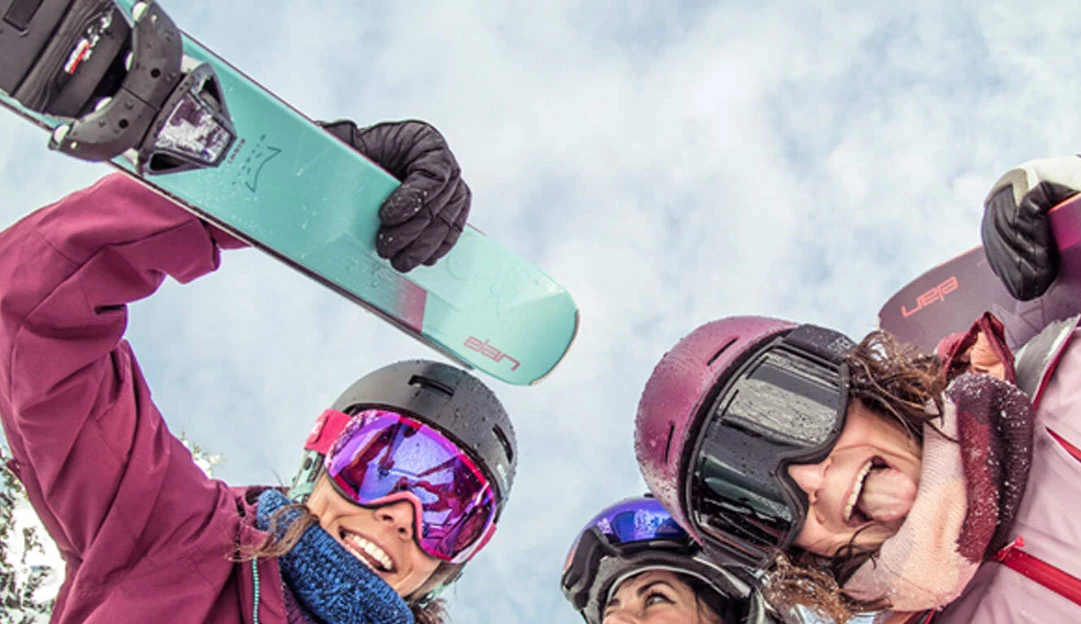
For a Great Day on a Ski Slope You Need Proper Ski Sportswear
, Author: Luka
Gore-Tex membrane, Primaloft insulation, Merino wool, etc. You can find all these expressions on ski sportswear tags. But, do you know what they really mean and what are different materials used for? The times of thick and stiff ski clothing have passed. Nowadays producers like Picture organic, Dainese, Colmar, UYN and others use technologically advanced materials that enable total freedom of movement, your skin to breathe, wicking sweat away from the body, and top-notch thermal insulation on the critical parts of clothing.
Bear in mind that warm clothing is important. Since you won't stand still on the ski slope, but actually be moving a lot, don't forget that the clothing must also breathe well and wick the sweat away from the body. Getting wet under that thick down jacket, you'll quickly catch a cold.
Basic rule for wearing ski sportswear – WEAR THREE LAYERS
-
- Base/first layer: active underwear that wicks away sweat.
- Mid layer: turtle neck, pullover, down jacket made of warm fabric, fleece or a thinner down layer that keeps heat close to your body, especially on the torso part.
- Outer/protective layer: parka or a jacket and ski pants fitted with different membranes (e. g. Gore-Tex) that provide fully waterproof shell against snow and wind, and breathe well.
Base/First Layer - Active Underwear
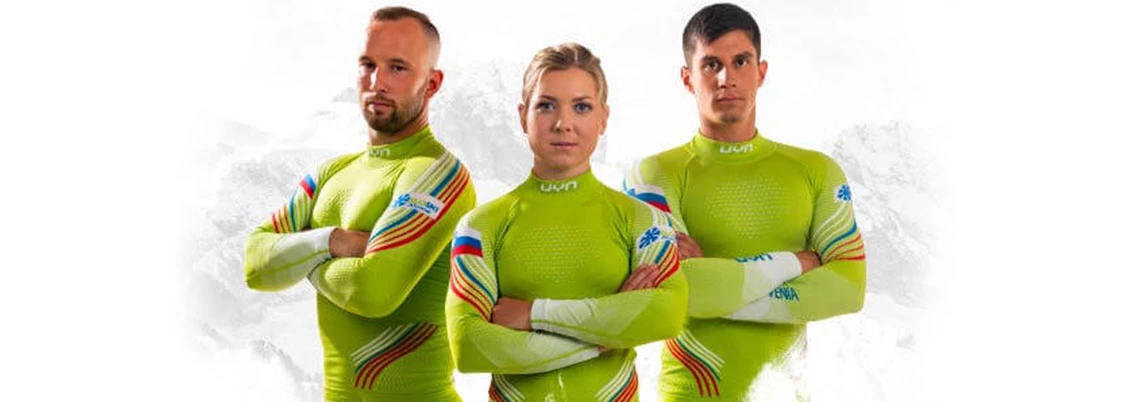
You put on the base layer first. Therefore, under all other layers of ski clothing is hiding men underwear and women active underwear. Wearing proper active underwear, you'll always feel great.
Active underwear, designed for athletes, wicks away sweat and keeps you warm. The best part of wearing it is that the skin is never directly exposed to the moisture which prevents you to be cold if you rest a little during skiing.
Manufacturers use various synthetic materials or natural wool to produce active underwear.
It is best to have two different sets of active underwear from which, depending on the weather forecast, you choose the more appropriate one. Base layer can also include ski socks that are also manufactured from synthetic materials or merino wool. Socks keep you warm, with material reinforcements on critical spots prevent blisters to occur, and enhance comfort and improve fitting to the ski shoes.
Mid Layer

Correctly chosen mid layer will keep you pleasantly warm and at the same time wick sweat away from the body. Clothing that we wear on top of active underwear take care of body temperature regulation and prevent hypothermia.
Mid layers usually include: ski turtle necks, fleeces, vests and also thinner down jackets for the coldest days on the slope.
Sleeves and lateral parts of mid layer clothing are often made of slightly thinner and elastic materials that don’t restrict movement and provide top comfort during skiing. They tend to be thicker on the torso part, layered with fleece or Primaloft fabric for high effective insulation or even with synthetic down for even more warmth.
High collars keep your neck protected from cold wind at high speeds on the slope.
Outer/Protective Layer
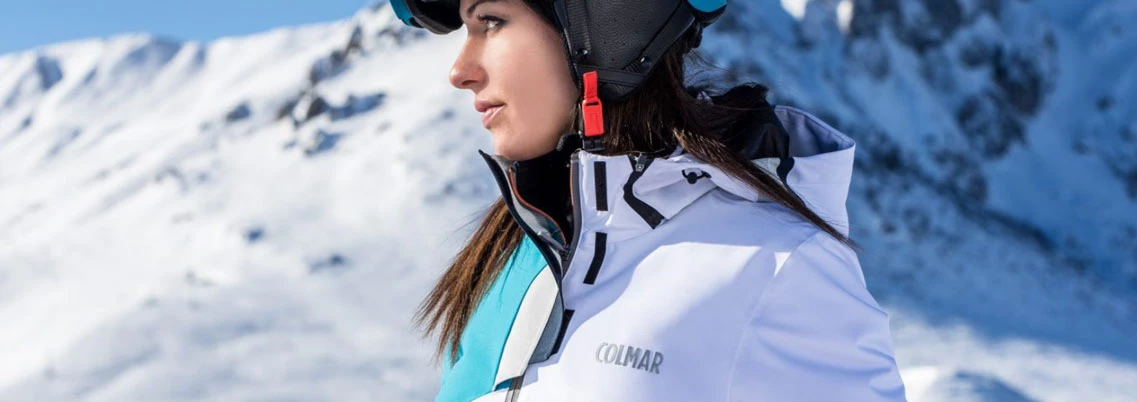
The third layer is by the rule made of two pieces, ski jackets for men and women's ski jackets men ski pants and women ski pants. On top of the base and insulation layer we put on a ski jacket and ski pants that protect us from water and wind while wicking moisture away from our body.
Top quality materials that manufacturers use to tailor the best ski clothing really don't get wet in the usual circumstances, not even in heavy snow or rain. They are light and elastic, and provide complete freedom of movement.
To know better what is the real waterproofness of sportswear, each piece of clothing is labelled with waterproof specification (water column).
The higher the water column longer you'll stay dry in heavy snow or rain. 6.000 mm water column means that clothing provides solid defence from moisture in case of dew or light snow. If the manufacturer states that ski jacket or pants have more than 20.000 mm water column, you are free to stay out in heavy rain or snow for hours.
For an average skier that doesn't expose himself or herself to the extreme weather conditions, usually water column between 11.000 and 17.000 mm would suffice.
Along the water column specification, most manufacturers also state data about moisture/vapor permeability. It tells you how breathable a material is. The higher the number, the faster the material wicks moisture away from the body and keeps the skin dry.
If you're buying a ski jacket and pants that are truly waterproof, make sure that, besides being made of top-quality materials, they have watertight zippers and taped or welded seams.
The outer layer can also be fitted with insulation materials that keep the body warm. For better temperature regulation ski pants and jackets can have zipper vents. Jackets under armpits, pants mostly on the inner side of the thighs.
Ski gloves
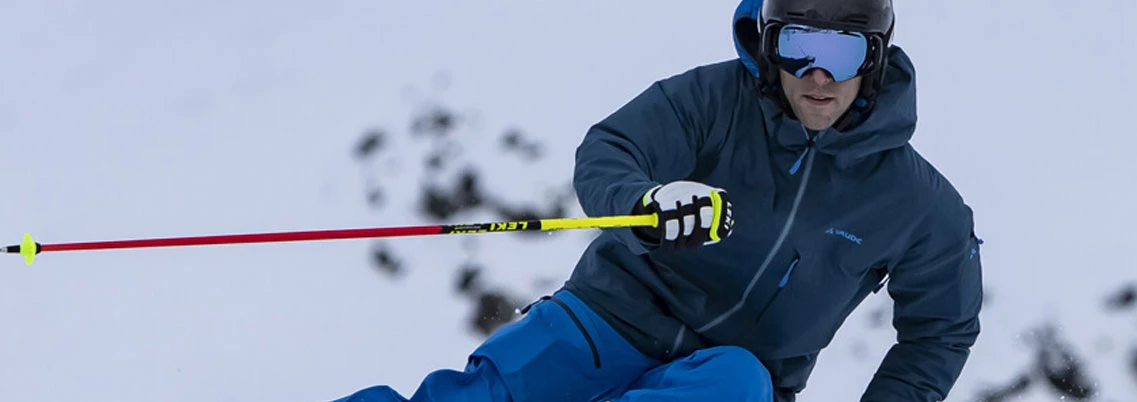
Choosing the right ski gloves is as important as choosing the right ski clothing. Ski gloves will protect you from cold and water. Since they are often equipped with protective layers on critical parts, gloves can also prevent all sorts of injuries. As it goes with clothing, it is important how breathable they are and that they provide effective ski poles handling (grip).
If your hands are often cold and you plan to ski on the coldest days, we recommend you to buy ski mittens with additional liners.
Don't Forget About the Helmet
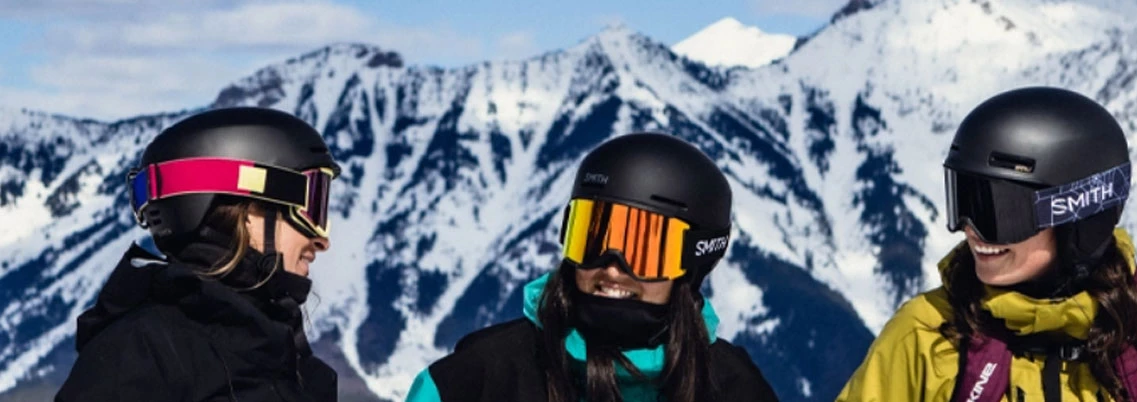
Ski helmet has lately become an indispensable part of the ski gear. Thanks to the advanced technology, helmets are nowadays light, airy and comfortable. That is why we don't see any reason not to wear one.
Many holes that you can randomly open or close take care for the ventilation when it gets hot. Helmets mostly have vents to wick moisture from the goggles thus preventing the goggles to become foggy. Helmet circumference is adjustable and provides perfect fitting.
Ski goggles
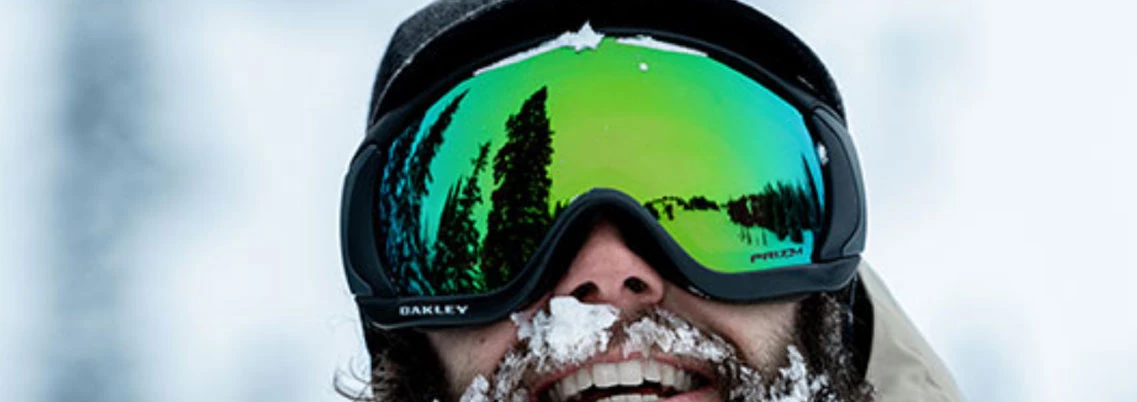
Helmet protects your head. What about your eyes? If you suddenly become sun blinded or your eyes are completely filled with tears because of the wind, you endanger yourself and others on the slope. Also, UV rays that are even more intensive at the higher altitudes, are not good for your eyes, so you better choose top-quality ski goggles.
When you’re buying ski goggles bear in mind that they must fit your head structure and need to be compatible with your helmet (need to fit nicely).
Goggles manufacturers offer a broad variety of different lens shades. For example, shades appropriate for intense sunlight, fog, cloudy weather and so on. Before you buy goggles, you need to consider when and in what weather conditions you ski most often. Check also if you get lenses for different light conditions in addition to the installed ones.
Goggles lenses can be polarized to reduce light glare.
Conclusion
The most important thing is that you feel good in your clothes and your gear. And that the sportswear fits you and doesn't restrict your freedom of movement. At the same time clothing must protect you from weather elements and keep you warm. If besides all that you also like the looks, you'll feel even better.

